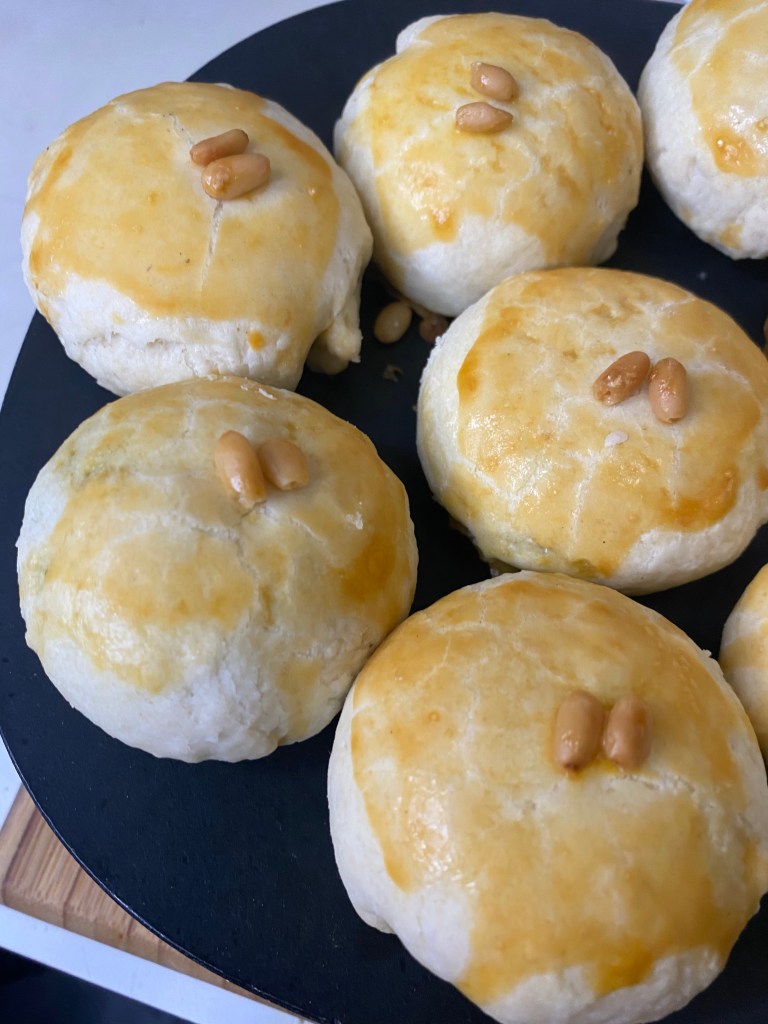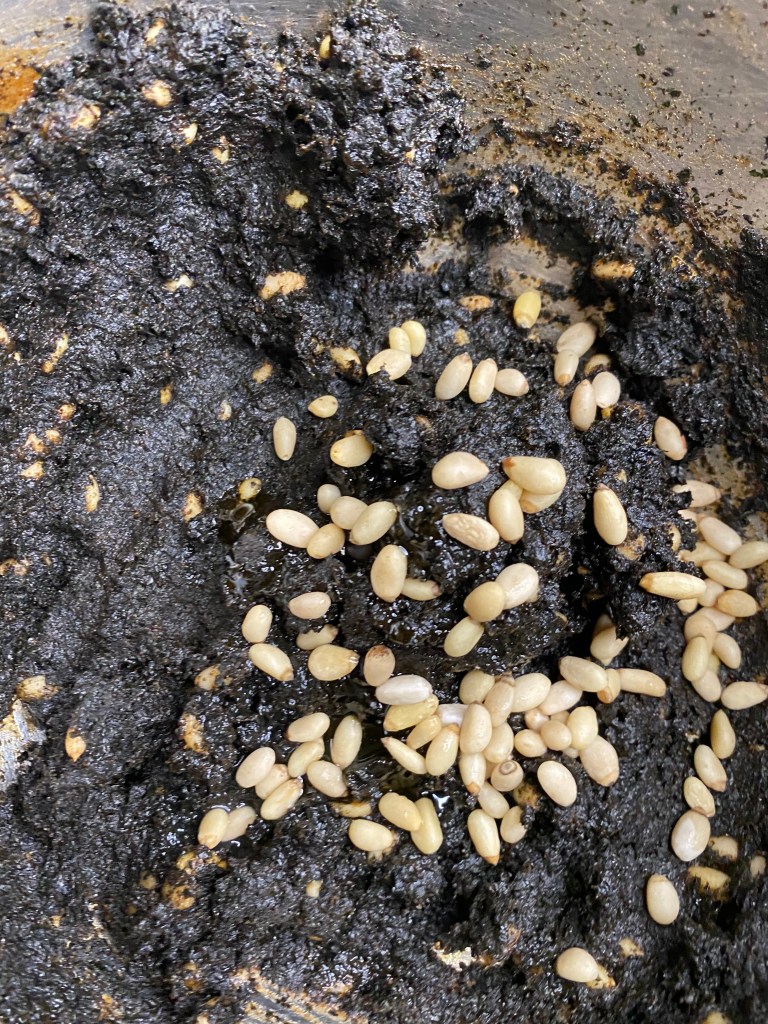
My partner is from China and every year I try to make a different kind of mooncake for Mid-Autumn Festival. The variety of this holiday dessert is infinite, and in the past I’ve tried different fillings from ham and roses to fruit, from purple yam to salt-cured egg yolk (even a giant one from the egg of a rhea, similar to an ostrich!)
The mooncake has powerful symbolic associations with the full moon and the bounty of the harvest season. Its origins go back to the Shang dynasty (approximately 1600 to 1046 BC), but the earliest mooncakes, produced as offerings for altars of the deceased, were round cakes with no filling, thick in the middle and thin on the edges, named Taishi (Grand Historian) cakes after a government official who held that title. Around the 2nd century BC, these cakes started to be filled for the first time, using sesame or walnut. Later innovations resulted in the special molds that shape many modern moooncakes, although some variants (like the ones I tend to make) are still produced un-molded and round like the full moon.
Here’s a mooncake I’ve never tried before, using this recipe with some modifications (as the English was auto-translated, I’ve adapted it for clarity below and added US measurements). Seaweed powder mooncakes are a regional specialty associated with the city of Ningbo in Zhejiang province on China’s east coast. Rather than pine nuts they are sometimes made with walnuts, one of the very earliest filling ingredients; indeed mooncakes are said to have originated in Zhejiang. These rely on a technique commonly used in Chinese baked goods: two separate doughs are formed, a water dough made of lard, flour and water and an oil dough just made of lard and flour. A ball of water dough is wrapped around a ball of oil dough, and this is flattened and rolled up several times to laminate the dough and create flaky layers.
These mooncakes had a really interesting combination of flavors; the crust is super rich and flaky and dense, the filling is sweet and savory, and the seaweed is not overpowering with the other ingredients. To make the seaweed powder, I ran some sheets of seaweed paper through a spice grinder. You will need a lot of sheets as they are very light!
Seaweed Mooncakes
Makes 25 small cakes.
- Filling:
- Sweet bean paste, 300g / 1 and 1/3rd cups (original recipe says white bean paste, I used black)
- Seaweed powder 50g / little less than 1/4 cup
- Pine nuts 60g / 1/4 cup (you could also use walnuts)
- Maltose syrup 50g / little less than 1/4 cup (I used Korean rice syrup; corn syrup or honey would also work)
- Salt 10g / 2 and 1/4 teaspoons
- Corn oil 100g / little less than half a cup
- Water Dough:
- Medium-gluten flour 150g / 10 tablespoons plus 2 teaspoons
- Low-gluten flour (cake flour) 150g / 10 tablespoons plus 2 teaspoons
- Lard (refrigerated) 120g / 1/2 a cup
- Sugar 12g / little less than a tablespoon
- Salt 3g / 3/4 of a teaspoon
- Pure water 85g / 6 tablespoons
- Oil Dough:
- Low-gluten flour (cake flour) 200g / 1 cup
- Lard 100g / 1/2 a cup
- Decoration:
Steps:
- Mix all the filling ingredients and divide into 25 small balls. Set aside in fridge.
- Mix the water dough by hand or with a mixer until combined; then wrap in plastic wrap and let rest for about 30 minutes in the fridge.
- Mix the oil dough, wrap in plastic wrap and let it rest for about 30 minutes in the fridge.
- Divide the water dough into 25 balls of equal size. Cover with plastic wrap and return to fridge.
- Divide the oil dough into 25 balls of equal size.
- Flatten a ball of water dough and wrap it around a ball of oil dough, rolling in your hands until the outside is smooth. Repeat with the other balls.
- When you have combined all the balls of dough, take one and roll it out as thin as possible with a rolling pin, being careful not to tear the outside of the water dough. Roll it up into a cylinder and repeat with the other balls.
- Take one of your cylinders of dough, roll it out flat, and roll it up into a cylinder again. Repeat with the other cylinders, then repeat this process one more time. Each ball will be rolled out three times.
- Let dough rest for 10 more minutes.
- Fold a cylinder in half and flatten it into a rough circle. Wrap this around a ball of filling and shape by hand into a smooth, round cake (a slightly flattened sphere shape).
- Place mooncakes on a baking tray, brush with egg yolk wash and add nut garnish.
- Bake at 200 degrees C / 392 F for 15 minutes. Then remove from the oven, apply egg wash again, and bake for another 10 minutes until golden brown.


You must be logged in to post a comment.